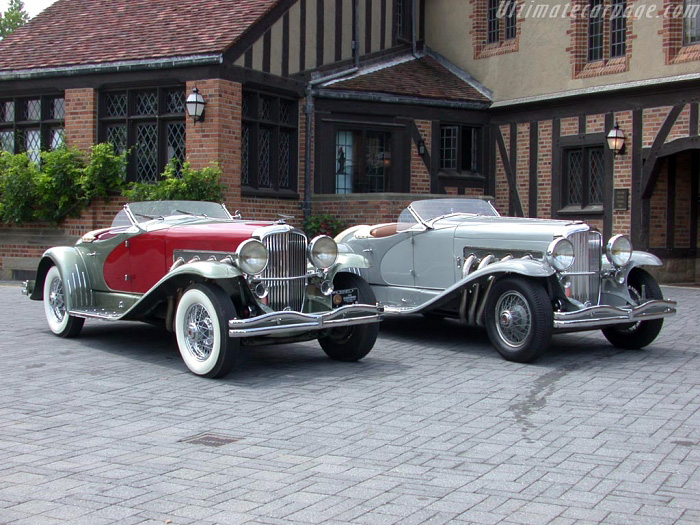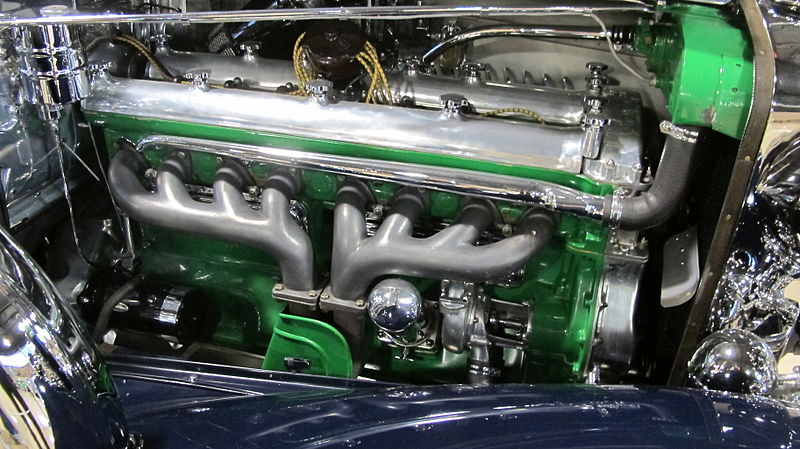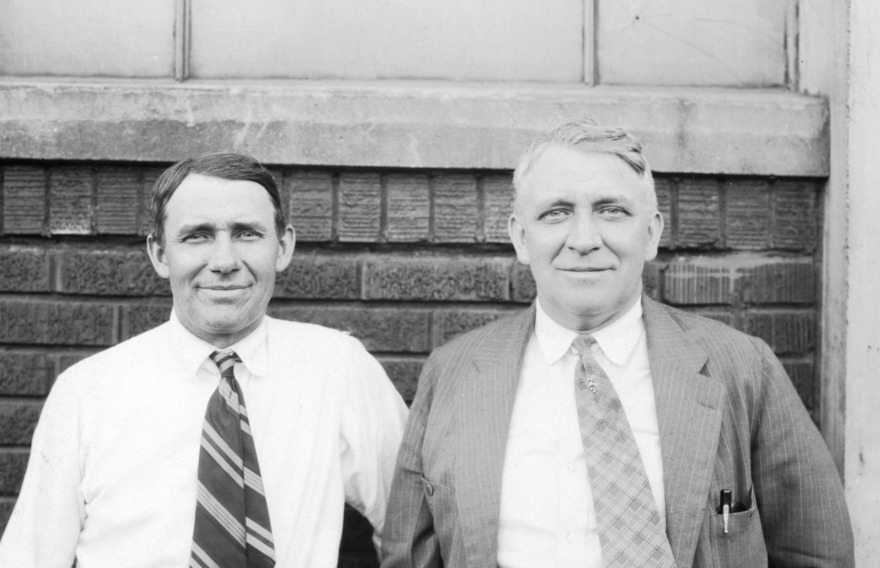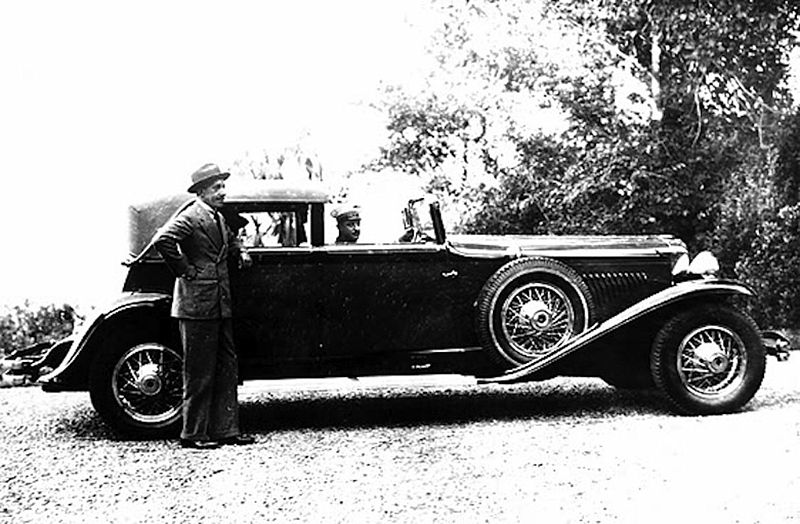They were inventors in spirit and engineers at heart. Brothers Frederick and August Duesenberg became the first self-taughts who were able to stir up the pampered American society in the beginning of the 20th century. Pedantic guys of German origin created a luxury and fast supercar. It felt like there was no detail left without attention — starting from even a minor trait in design and ending up with engine gears. Historians of North American car manufacturing concur that it was the most beautiful car series ever produced in the USA.
The Duesenberg brothers started their “journey to fame” from bicycle manufacturing. They were not only assembling popular two-wheel transport, but also using their products to participate in bicycle racing. Later the companies Mason and Maytag invited the young engineers to take part in automobile manufacturing. Both Duesenbergs were so much fascinated by constructing the motors for racing cars that by 1914 their first engine became the “hero of the day” together with Eddie Rickenbacker. The race car driver behind the wheel of “Duesy” closed the top ten in Indianapolis 500 Mile race.
After a few sporting victories Frederick and August created a car for the wealthiest people of the North America. The latter were ready to pay for the exclusiveness and spacious stylish interior of the luxury vehicle. The debut car model of Duesenberg cost $6 500 in 1921…
Though having the most regular chassis, thoroughly elaborated engine parts were pleasing the eye of an aesthete and the racer’s soul. After winning the French Grand Prix the car had success in sports but not in the market. Low sales became the reason of the brothers’ company going bankrupt.

The first Duesenbergs’ attempt was rejected by Cord after a few trials. The second one remained only on paper. But after 27 months of hard work Frederick and August presented the Duesenberg J model. Two cars with LeBaron “dual cowl phaeton” body, finished in silver and black, were demonstrated at the New York Car Show on September 1, 1928. That was the first step towards Hollywood. The cars were called “the product of Frederick Duesenberg’s genius and Cord's money”.

It had massive chassis with central lubrication system, rigid axels with semi-elliptic springs and Watson stabilators. Having 2 100 kg (4 630 lb) curb weight the car was accelerating up to 190 km/h (118 mph). And in spite of its dimensions (3 600 mm short wheelbase and 3 900 mm extended wheelbase) this car was able to reach 0 to 160 km/h in 21 seconds!
Why did the American deep pockets love Duesenberg J? What enraptured the bankers and members of the Royal families so much they were ready to stump up a part of their fortune for it?

But one special device became the most interesting and revolutionary element in terms of automobile comfort. It looked like a regular watch. Nowadays it can be compared to an onboard computer. With the help of a complicated 24-gear system lights came on the panel reminding the driver the oil needed changing or notifying about low battery fluid level. All those necessary works had to be done every 2 000 — 2 200 km. And every 120 km an exotic device turned on the pump to supply the chassis details with liquid oil. However this technology did not exclude the necessity of a regular manual lubrication. At that time one could only dream about viscous consistent substance which had the density of butter. But the Duesenberg brothers found a worthy solution.
Each car was assembled manually. Bodywork was performed in a studio according to the demands of the clients based on their desires and resources. Almost half of Duesenberg J cars were created by the company's chief body designer Gordon Buehrig. The rest were designed and manufactured by private and subsidiary companies belonging to the Duesenbergs. That is why it’s impossible to meet two absolutely similar DJ models.
The cost of Duesenberg J chassis reached $10 000 and it was $20 000 together with the body. The price of the cars assembled in Europe was even higher due to import expenses of the valuable chassis.
Duesenberg J became a symbol of status, wealth and high position in the USA and Europe. Among the owners of this luxurious supercar one could find Greta Garbo, Clark Gable, Al Capone, Gary Cooper, James Cagney; and also members of Royal families such as the Duke of Windsor, the Kings Alfonso XIII of Spain and Victor Emmanuel III of Italy and Queen Maria of Yugoslavia.
Why did the stars of Hollywood wanted to see this car in their collections? It is known, that in winter of 1935 Gary Cooper, who had just played in “The Lives of a Bengal Lancer”, entered the Duesenberg showroom in Los Angeles. The star felt like spending his earnings for an exclusive car which had impressed him so much. The chassis of the unusual car were glittering proudly in front of the actor. The shortened wheelbase (125 in or 3 175 mm) went together with the special sports version of the engine producing 400 hp. Cooper bought the chassis under the condition that it was sent to La Grande studio in Indiana where they would install a light roadster body.
But that car was not destined to become the one and only. Clark Gable, the actor and Gary Cooper’s friend, ordered an exact copy of that Duesenberg J. The fan of Duesenberg brand called the car Sport Super Charger J. It was the only pair of DJs with such short wheelbase and upgraded engine ever produced. Those two cars were as unique as the people they were intended for.
The interest towards Duesenberg J did not vanish even after the company’s crash. In 1938–1940’s two more cars were assembled. One of them — with Rollston body and extended wheelbase — was bought by the German artist Rudolf Bauer. Even now Hollywood stars give jealous looks to those lucky ones who can afford driving the luxurious representatives of top technologies of the previous century.
Photo: carpedia.ru, sportcarsdigest.com, wikipedia.org, thisandthatandmoreofthesame.blogspot.ru












